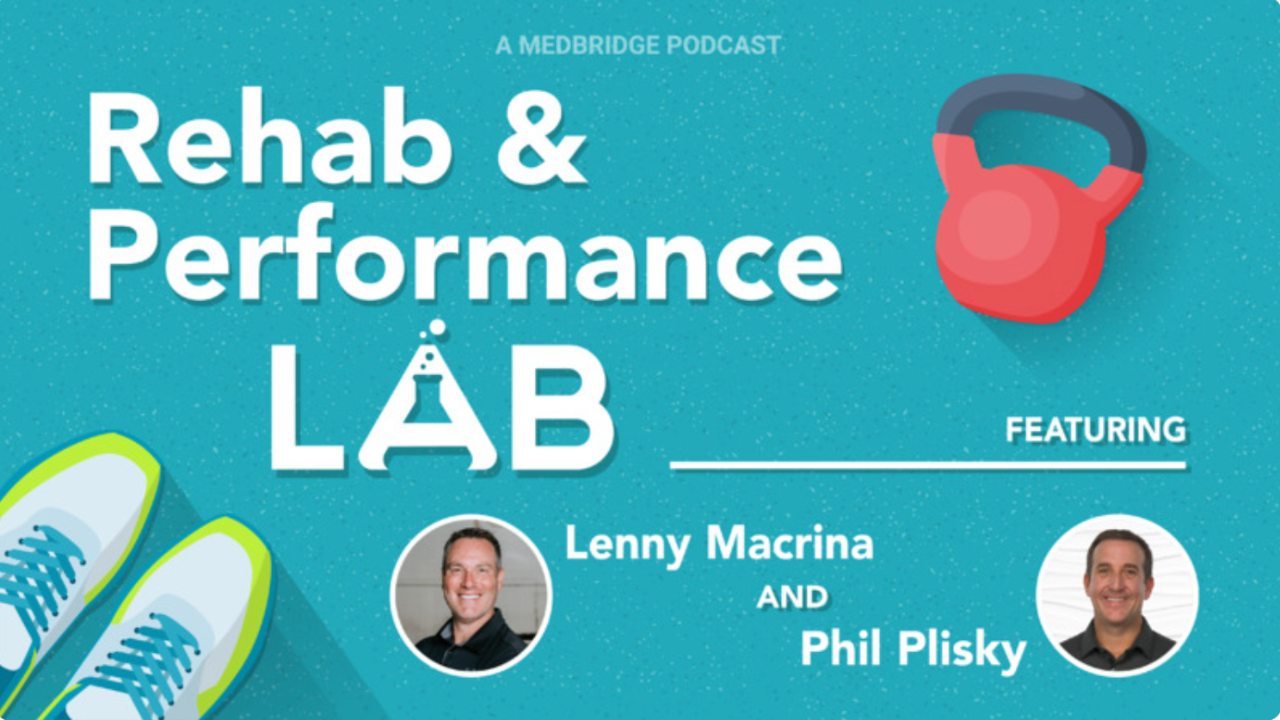
The missing link in shoulder rehab: AMI, e-stim, and heavy loading
Shoulder rehab is often treated delicately—using yellow therabands like they are caution tape. Certainly in the beginning of rehab, we have to respect tissue healing and physiology, but are we actually slowing down recovery by playing it too safe? In this special live episode of the Rehab & Performance Lab Podcast "What’s the Smartest Path Back After Shoulder Injury?", we tackled some of the persistent myths and overlooked strategies in shoulder rehab. I was joined by Lenny Macrina, and we got into everything from arthrogenic muscle inhibition (AMI), rotator cuff loading, and how to objectively measure strength the right way.
Here are my big takeaways from this discussion:
Should we be using e-stim after shoulder surgery?
We wouldn't dream of rehabbing a post-op ACL without addressing Arthrogenic Muscle Inhibition (AMI). Yet, we often ignore it in the shoulder. Just like the quad, the cuff shuts down after trauma. E-stim isn't just a nice-to-have; it's essential to wake that muscle up. In this episode, we talked about why the same early interventions we use post-ACL, like e-stim, should also be standard after shoulder surgery or injury. It can make a real difference in muscle activation and long-term outcomes.
Are we underloading the rotator cuff?
One of the most persistent myths I hear is that the rotator cuff only needs 3–5 pounds of resistance. But physiology tells a different story. If we want real remodeling and strength, we have to load the cuff like any other muscle group. These muscles need to be loaded according to the same principles we apply to every other muscle group. Think strength-to-bodyweight ratios: ER and scaption should be 15–20% of bodyweight. If we’re not hitting that, we’re likely underdosing a key part of the rehab process.
Are we objectively testing strength?
Too often, we rely on manual muscle testing when we should be using tools like handheld dynamometry. We also need to go beyond simple symmetry. We should be looking at meaningful ratios – like ER:IR strength (which should be 65–75%) – and making sure external rotation and scaption strength meet bodyweight thresholds. Testing gives us real data to guide progression and return-to-sport decisions.
What shoulder strength ratios should be aiming for with testing?
- Shoulder symmetry within 10 % and ideally within 5%
- ER to IR ratio: 2/3 -3/4
- ER to body weight ratio:15 to 20%
- IR to body weight:25 to 30%
- Scaption to body weight:15-20%.
Be Systematic and Ask the Right Questions!
If you’re a rehab professional, here are a few core takeaways I want you to implement immediately:
-
Think in terms of load: We need to stop underestimating what the shoulder can (and needs to) handle.
-
Recognize AMI beyond the knee: Early activation matters, and e-stim in the shoulder can be a game changer.
-
Measure what matters: Use objective strength testing to track meaningful ratios and drive decisions.
Ready to Master Athlete Performance?
Whether you’re treating post-op athletes or fine-tuning high-level performers, applying these principles helps us better serve our patients. Let’s keep learning together.
The gap between 'standard protocols' and optimal performance is where many clinicians get stuck. You don't have to guess on your progressions.
In the Coaches Club, we dive deep into these exact frameworks—giving you the roadmaps and community support to take athletes from the table to the field with total confidence










